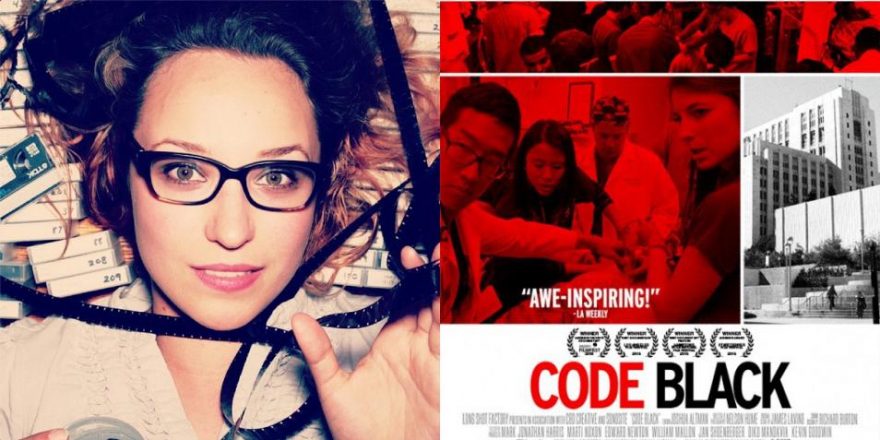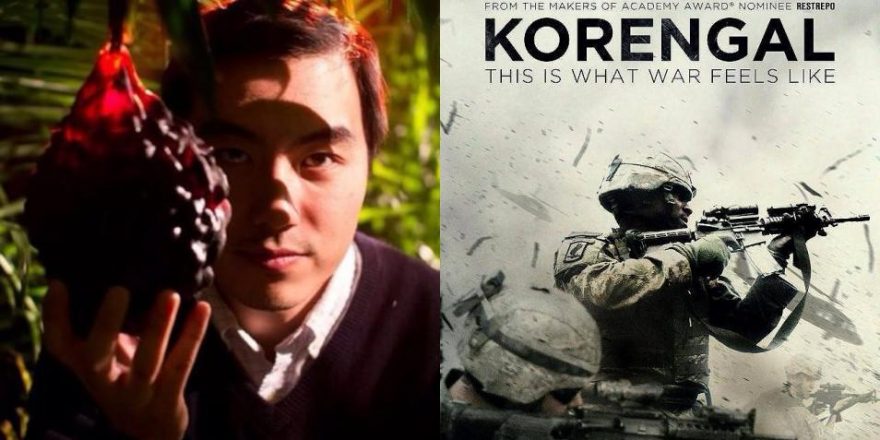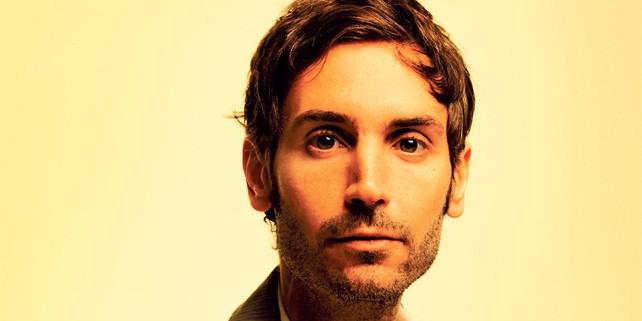Code Black, Ryan McGarry’s documentary about doctors in training at Los Angeles County Hospital, and my film Approaching the Elephant both have something to say about anarchy and institutions.
For most of this piece, I’m going to talk about the content of the film and not the craft, because I found the content more thought provoking. But let’s brush over what worked and didn’t work about the filmmaking, since it is, after all, something crafted. Code Black‘s soundtrack is overblown out of this atmosphere. Whenever I hear music like this, I think of Marianne Moore’s poem “To a Streamroller” and its lines, “You crush all the particles down / into close conformity, and then walk back and forth on them. / Sparkling chips of rock / are crushed down to the level of the parent block.” Ultra-staged, overly lit interviews with trainee doctors reminded me of army recruitment ad campaigns, or angels. On the working end, Code Black radiates an unusually strong intimacy with its subjects, likely due to the fact that McGarry is a doctor at Los Angeles County Hospital, delivering a pulse to a movie that otherwise may have risked passing as the news or reality television. I appreciated the substantial observed moments. The most striking is a long shot of a group of doctors after they decide to stop resuscitation and pronounce a person dead. As the camera delicately pans over their faces, I felt all the weight inherent in the task of saving human lives.
Why I found the content of Code Black so intriguing is that it brings up a question my movie Approaching the Elephant – about a democratic free school during its inaugural year – also poses: what does a well-functioning institution look like?
During the first part of Code Black we’re dropped into footage of “C-Booth,” the trauma bay at the original Los Angeles County Hospital where, someone tells us, “more lives were saved than anywhere else on the planet.” Let me paint the picture. A swarm of energy. In one large, crowded room, people weave around each other and beds lined up side by side. Blood splatters the floor. A man drowsily holds a bandage to his temple. Five feet away from him a baby is secured with straps, her cautious eyes spanning the doctors and nurses over her. From above, we watch a man’s chest cut open to shock his heart. A wide shot from the opposite angle reveals a cluster of doctors dangling over a partition observing this procedure.
C-Booth, we learn, is considered the birthplace of emergency room medicine in the U.S., legendary not only for how many people were saved there but for the unique open environment that began when, someone tells us, a group of doctors “just built a room and starting taking people.” C-Booth was messy but vital and in that way reminded me a lot of free schools.
At free schools like the one in Approaching the Elephant, children decide for themselves what to do with their days, and all rules are created by vote – adults and children have an equal say. Similar to C-Booth, when you first step into a free school it’s common to see chaos. Disorder. People are everywhere, going everywhere. There’s uninhibited shouting, hammering, bursts of laughter. But watch for a couple minutes and you realize everyone has their own specific purpose and destination. Those boys are building a clubhouse, and that girl is making a sword. At C-Booth, too, what initially looks like mayhem quickly gives way to many people with many tasks: putting in an IV, getting water, procedures I can’t name. It’s not that there isn’t order, it’s just order of a different form than we’re used to.
What may look like chaos can also oftentimes be described disparagingly as anarchy, meaning without rulers or hierarchy, and free schools and C-Booth could both be described as anarchic. You can see this kind of anarchy in the direct eye contact and interactions between those “in charge” and “in training.” At C-Booth, like in free schools, people are constantly interacting as equals. There may be doctors and nurses, but overshadowing loose hierarchy is a sense of, amidst pressing work, being all in it together. And because of this cameraderie at C-Booth learning flourishes and work gets done.
The most striking sequence in Code Black is a transition. Image fades to black, and fades up in another hospital.
The second picture: along a white and quiet corridor lined with shut doors a man rides atop a slowly moving floor cleaner. The only sound is the regular beep of his machine. Someone tells us that C-Booth was torn down and replaced by this more earthquake-proof new building. The subsequent shots are of a young doctor in training, familiar to us from C-Booth, shuffling a thick stack of papers behind a desk. He tells the camera that in the new building, he spends about 10 minutes filling out paperwork for every two minutes he spends seeing patients.
Another person muses, “C-Booth was protected from regulation because it was impossible to regulate. Here regulation has come to roost.”
Another, “The days of the cowboy doctor are gone.”
Another, “Here there is little tolerance for mistakes, learning curves, the imperfections out there.”
And another, “Paperwork can kill the passion for saving someone’s life.”
Damn.
Not only are the doctors unhappy, the new hospital is regularly in code black, meaning it’s regularly far beyond capacity.
At C-Booth, the waiting room was the emergency room. Eyes on everyone at all times, all in it together. Here doctors coming in for their shift walk through a s segregated waiting room to another room within the ER, and at a computer scan a list of names of people who have been waiting 12, 18, 24 hours for care. It’s a restrictive, depressing and broken system.
Then the doctors in training meet and decide to make a small but significant change. Bringing back an element of C-Booth, they drag 20 chairs from the main waiting room into one of the ER rooms, and pull the most serious patients into this internal waiting room. This change allows them to have these patients in their range of vision, to begin to look over and talk to them immediately, instead of staring at a name on a screen. In a short time, the staff is energized and overall wait time has dropped by half.
What does this story of hospital structure suggest about what a well-functioning institution looks like? C-Booth is an example of how less regulation, less hierarchy, and more of a familial, messy, dare I say anarchistic environment, can sometimes work better. Especially in institutions that take on important and oftentimes overwhelming endeavors such as saving people’s lives and raising children, we can become so fearful of what could go wrong, and out of that fear become hyper-focused on top-down regulation, when perhaps we should be doing just the opposite.
Let’s be conscious of how our institutions work. Sometimes it can be illuminating to be the outlaw.
I think about this outlaw sensibility in terms of filmmaking as well. As I see more and more independent films that are slick and predictable, I wonder where the passion has gone to create work that is raw, messy, expressive, alive. I think it has something to do with fear. I won’t give into that fear and I know I’m not the only one.






